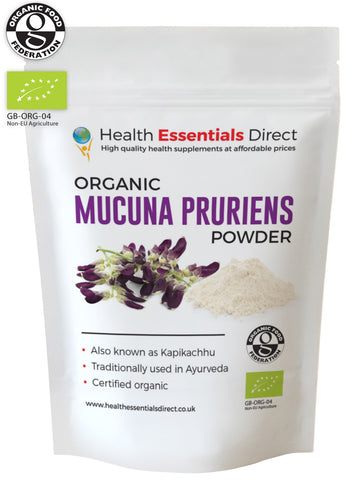Organic Zhu Ling Mushroom Powder (Polyporus umbellatus, From Fruiting Body)
Organic Zhu Ling Mushroom Powder (Polyporus Umbellatu)
-
Rare Mushroom also Known as Polyporus Umbellatus
-
Made From Fruiting Body
-
Certified Organic by Organic Food Federation
About Zhu Ling Mushrooms
Zhu ling mushrooms (Polyporus umbellatus) are a parasitic type of mushroom found at the base of hardwood trees specifically, beech and oak trees. The mushrooms are native to North America, China, and Europe. The edible fungus thrives in deciduous forests, on specific tree species. Botanically, zhu ling mushrooms are closely related to the maitake mushrooms. Some of the popular terms used to refer to the mushrooms include umbrella polypore and lumpy bracket. Zhu ling mushrooms have a characteristic strong yet pleasant flavour. The mushrooms mainly contribute to the decomposition of trees that serve as their hosts; while at it they benefit from the nutrients within. Zhu ling mushrooms does well in basic soils and wet climates. In most cases, they emerge during summer or spring. Being a parasite, they continues leeching of the host for many years. This makes it simpler to locate them on the subsequent harvests.
Zhu ling mushrooms consist of multiple umbrella-shaped caps stacked on top of each other. The Latin name of Zhu Ling means “a polypore that has umbrellas” The caps are white to light grey, but some may be greyish-brown. The caps are firmly placed on branched off stalks. A single cap can grow to widths of between 2-5 cm. However, the whole fruiting body can grow up to widths of between 10-45 cm. The fruiting body also has small, white pores which are located underneath the cap. There are approximately 2 pores per mm. These pores produce white spores. The caps are more than often soft during their earlier stages of development but harden once the mushroom starts to mature. Below the ground, the umbrella polypore forms a huge mass of fungal cells that act as a structure for storing food. This mass is called the sclerotium. The sclerotium is dark, hardened, and irregular on the outside but white on the inside. It can grow up to 30 cm wide. The Zhu ling mushroom sprouts from the sclerotium itself. The sclerotium forms the major part of the harvest for the Zhu Ling mushroom. Once decomposition of the mushroom begins, white rot starts to form attracting flies. A big sclerotium usually means a good harvest. After harvesting, the zhu ling mushroom is dried and finely ground to form organic zhu ling powder.
The use of zhu ling powder dates back to the 14th century. An ancient medical journal called “Ben Cao Gang Mu” written by Li Shi Zhen in 1578 claimed that taking Zhu Ling mushroom served as a remedy for body mishaps. The analogy was that people who used it for longer felt happier and looked younger. At the onset of the 1800s’, Zhu ling was given the scientific name Boletus umbellatus by Christiaan Hendrik Persoon. Around 1821, a renowned Swedish mycologist by the name Elias Magnus Fries renamed it Polyporus umbellatus. The two researchers play a key role as they increase people’s focus on this set of beneficial mushrooms. Due to the subtle nature of the mushroom, the natives believed that taking the mushroom lightened their spirits without them having to do much. The Chinese paid close attention to their yin and qi i.e. life force. They therefore preferred using herbal formulations that bring about balance within their bodies without causing much disturbance.
- Please note it is against MHRA guidelines for us to talk about any potential health benefits for this supplement however a quick google search on the potential benefits and you may be surprised.
How To Use
We recommend taking 2 teaspoons daily, can be added to smoothies, foods, water, or made into a hot tea.







